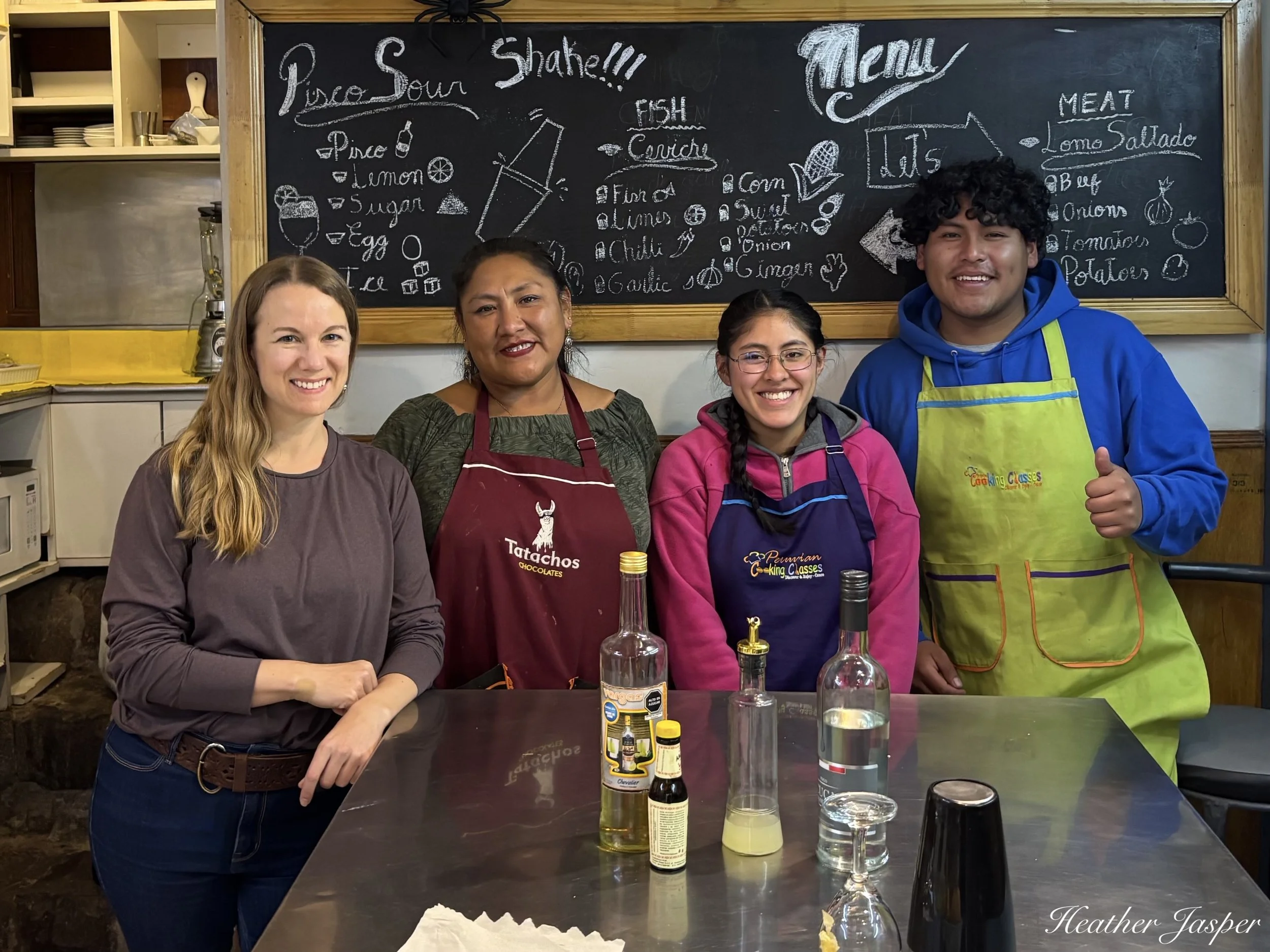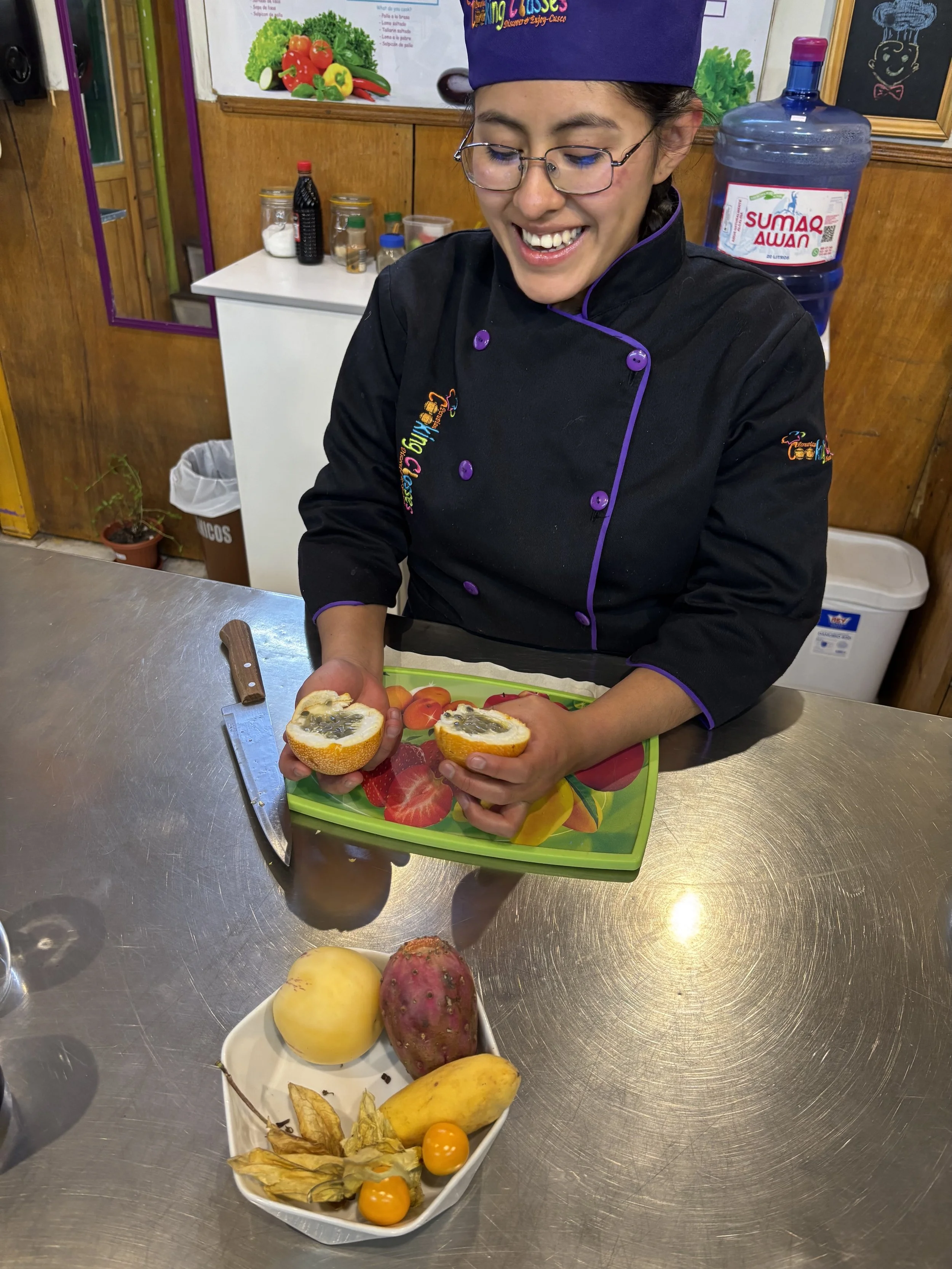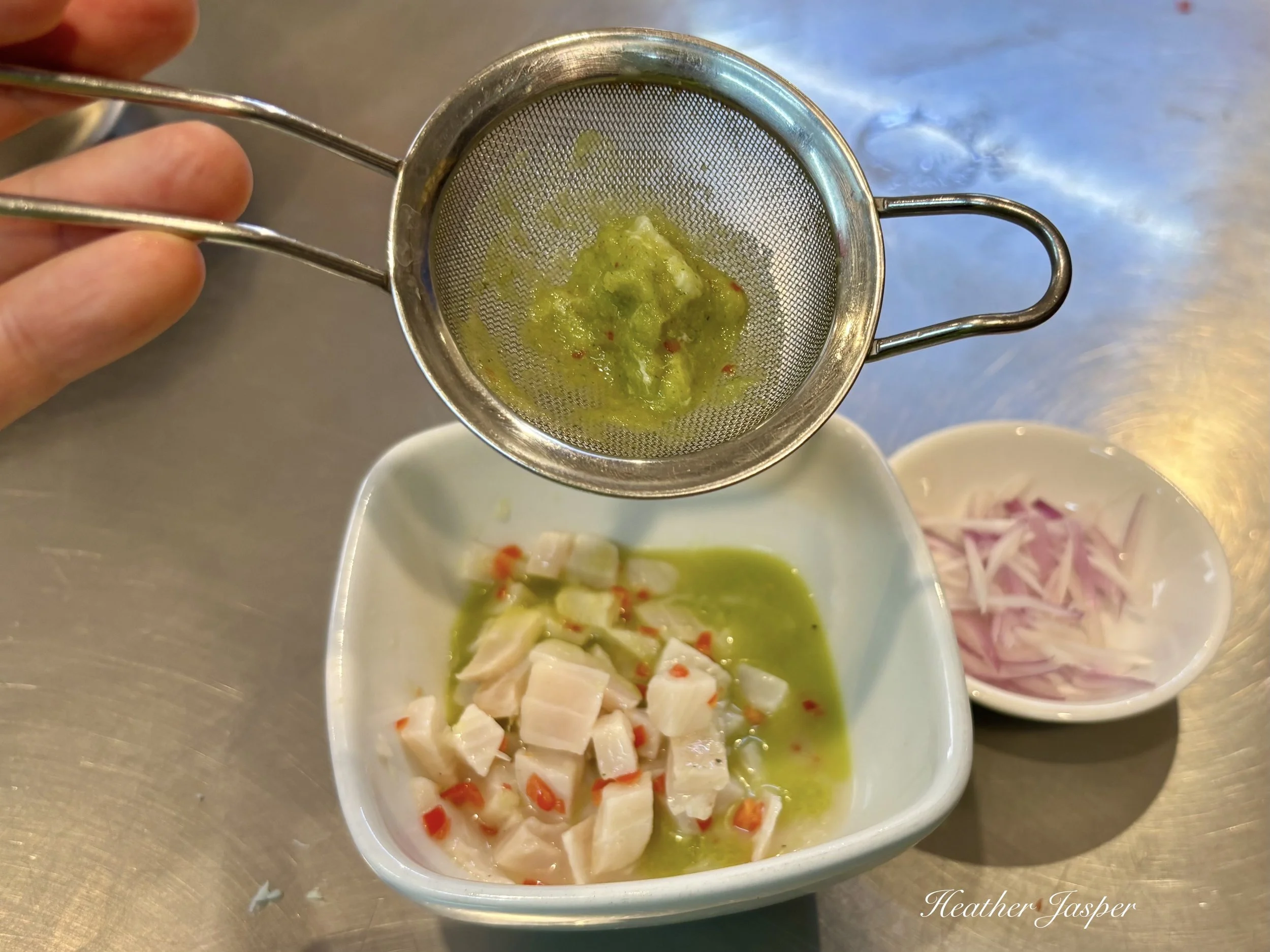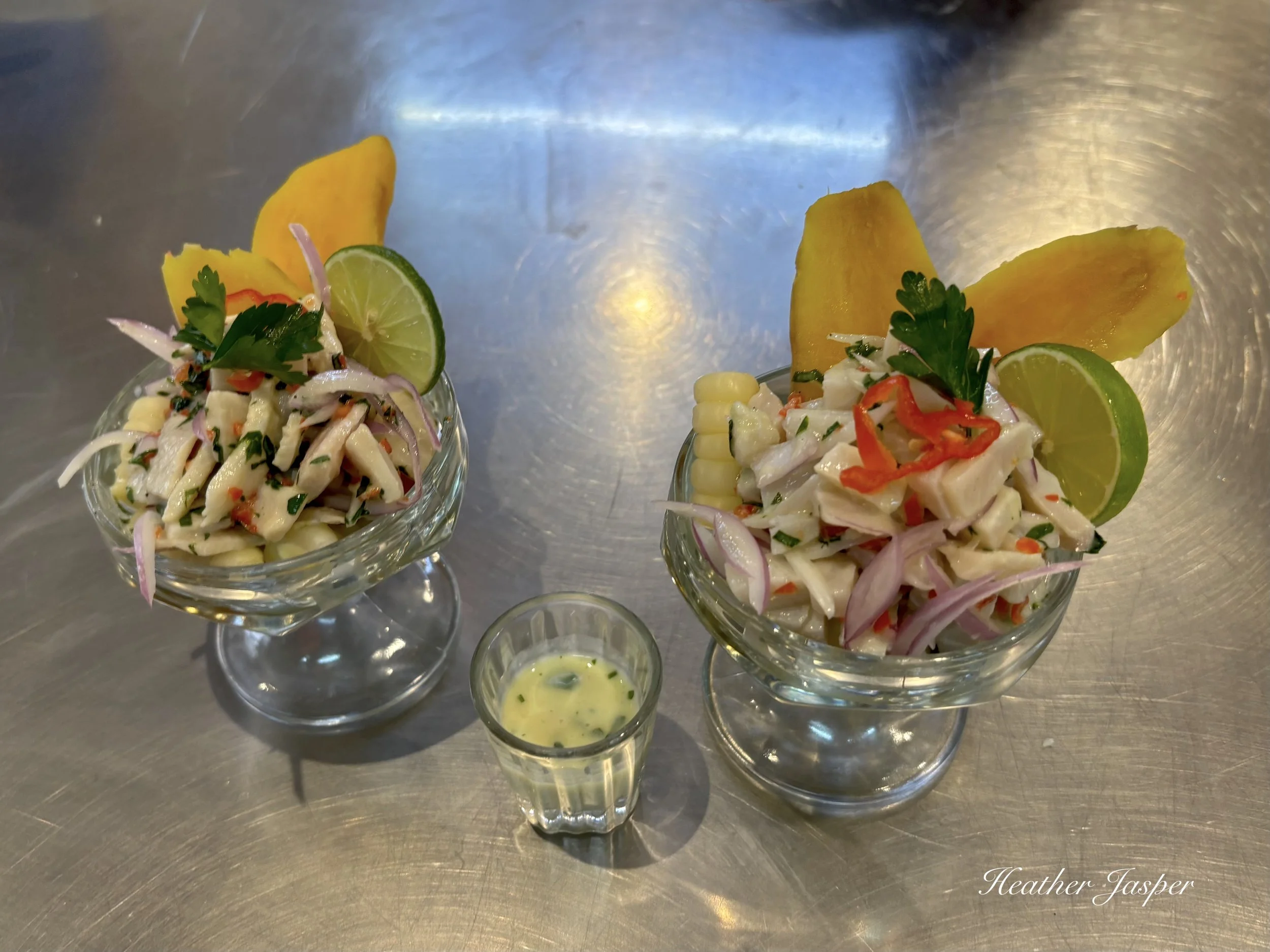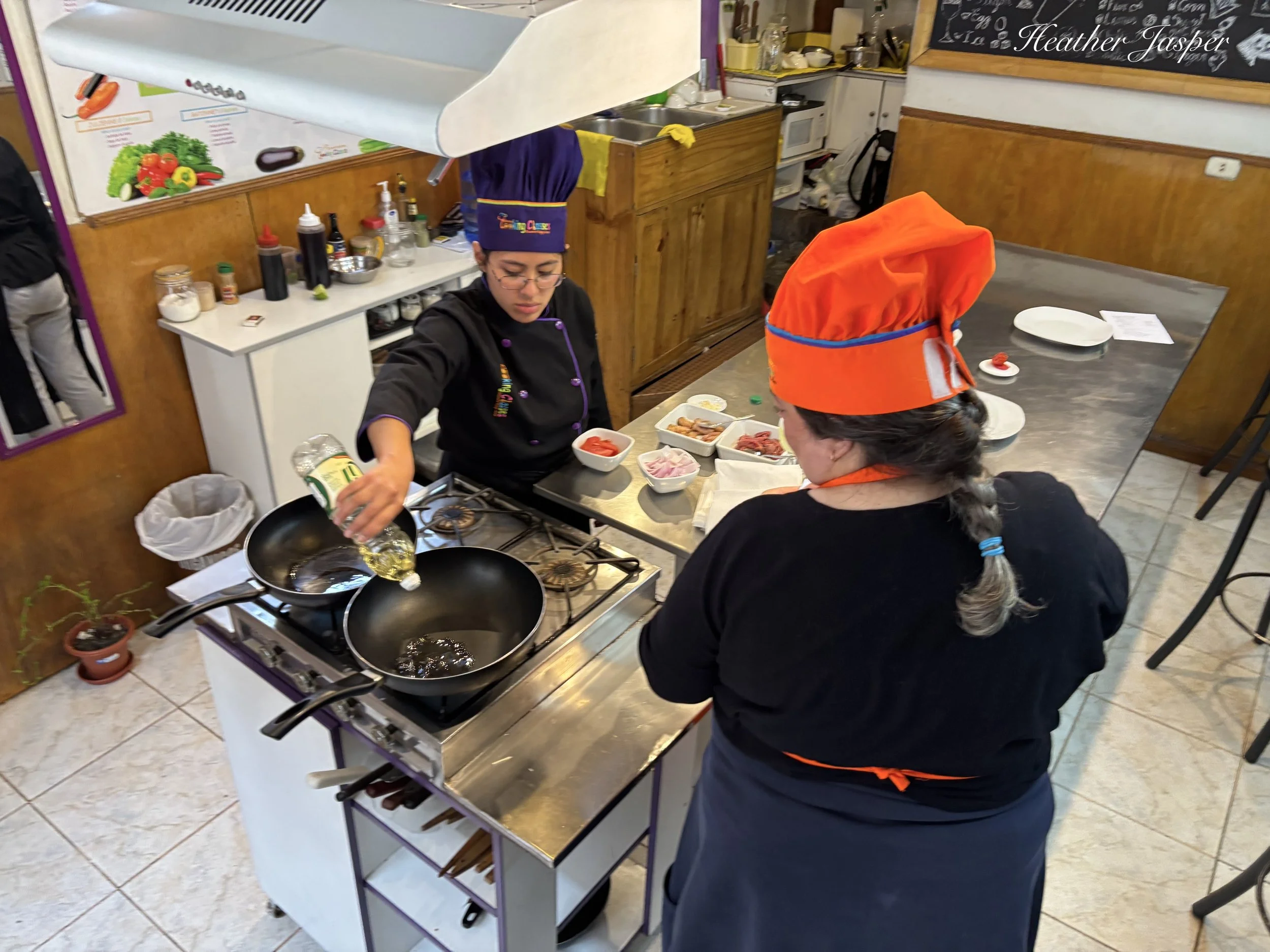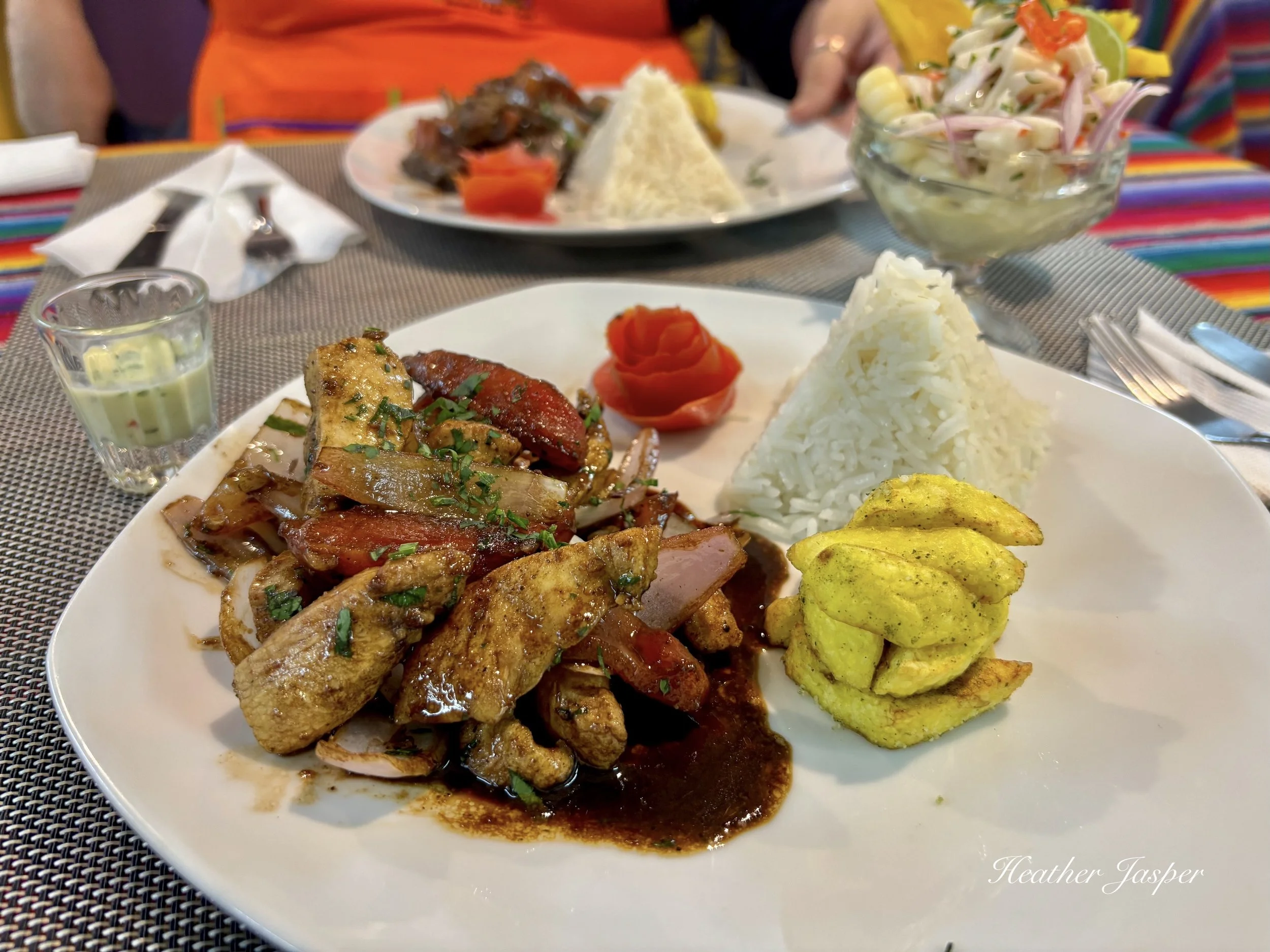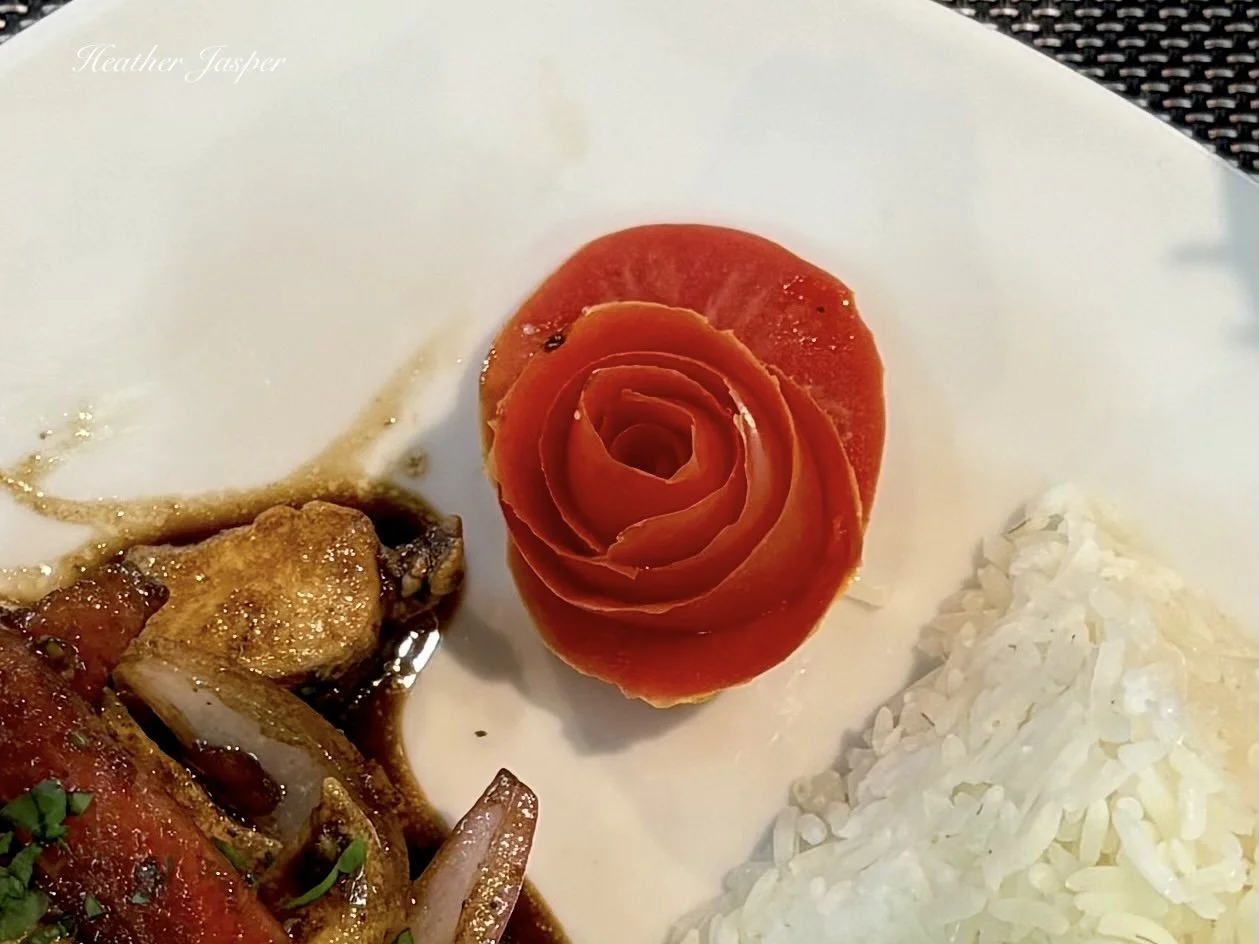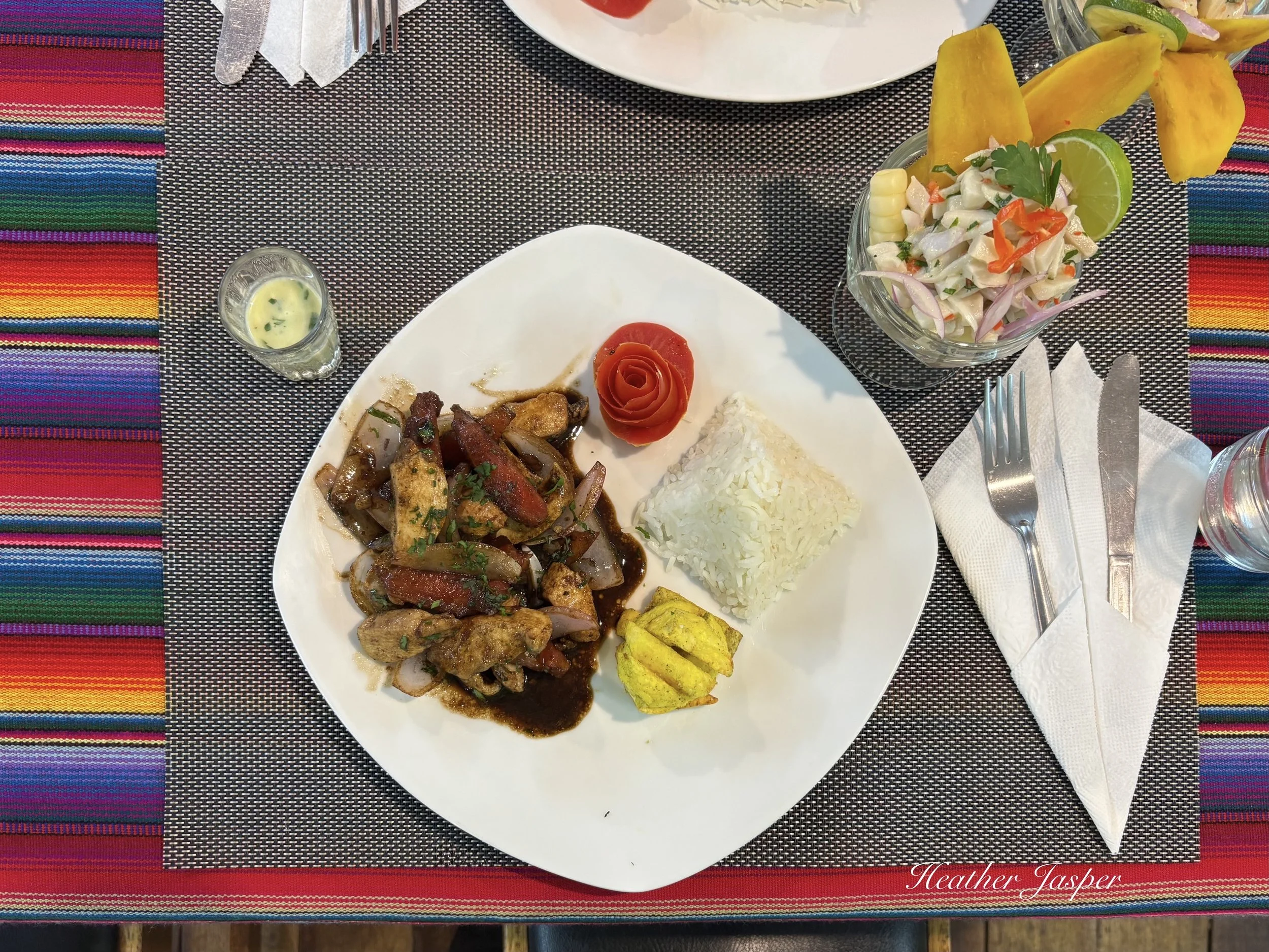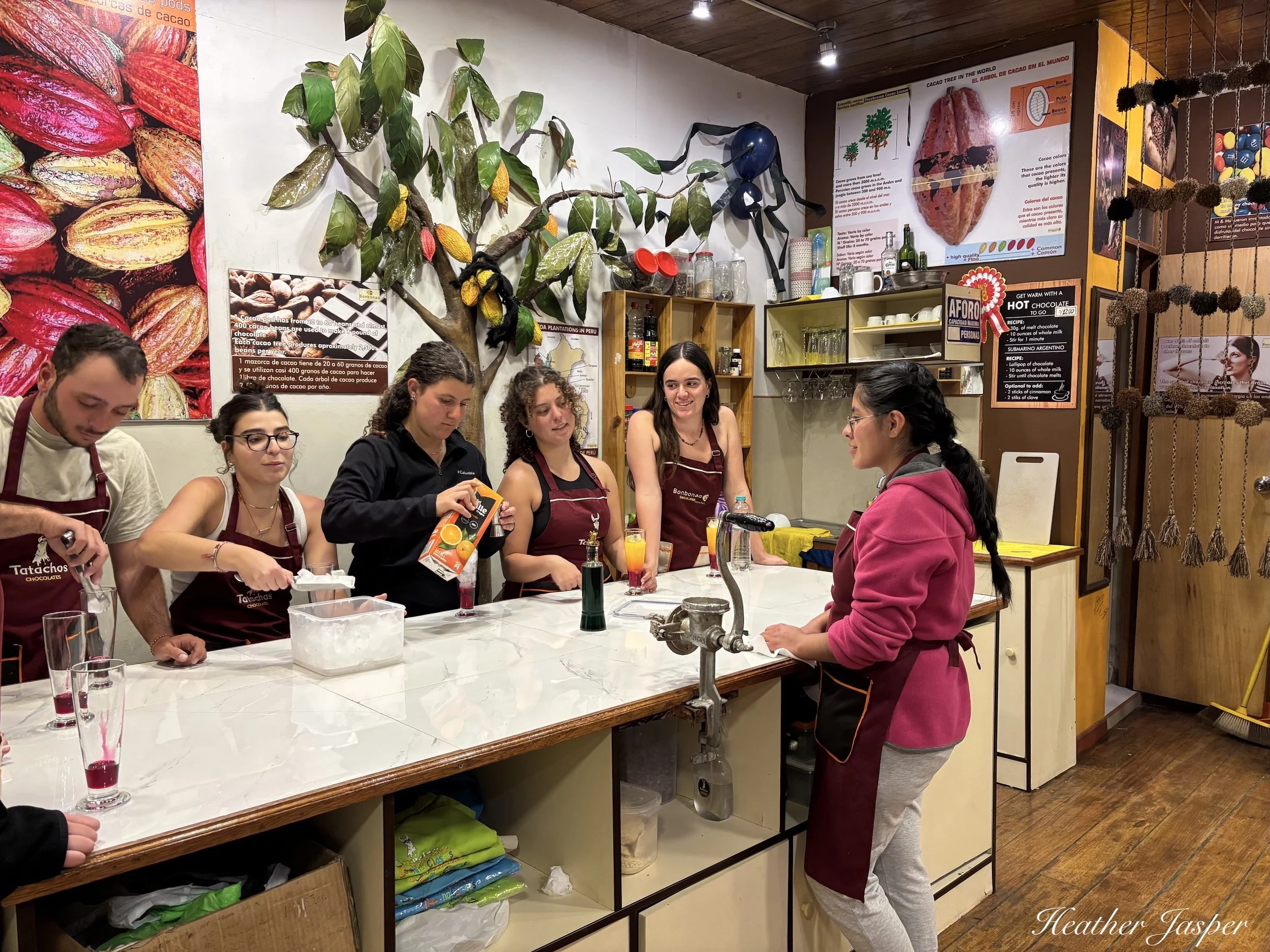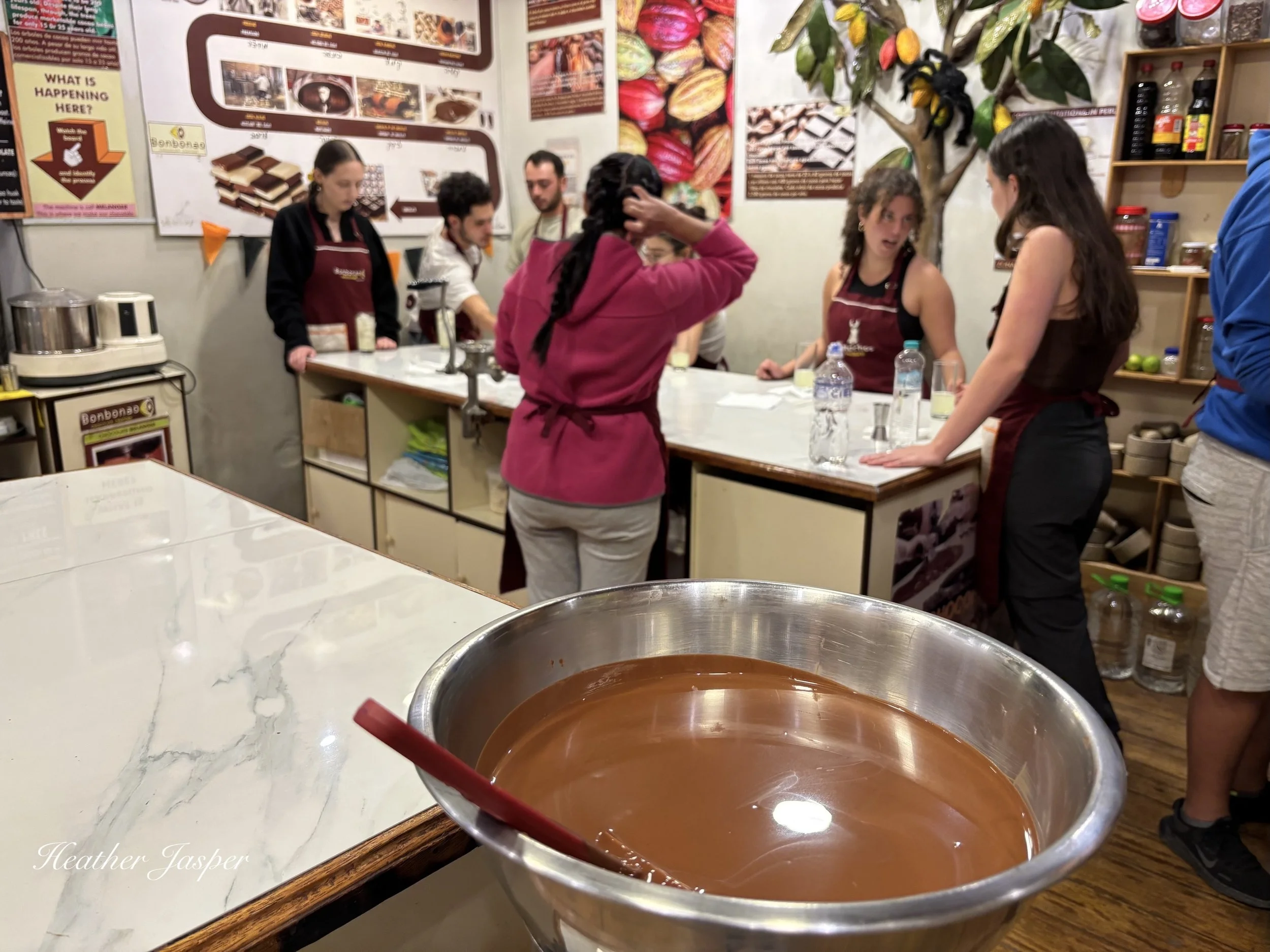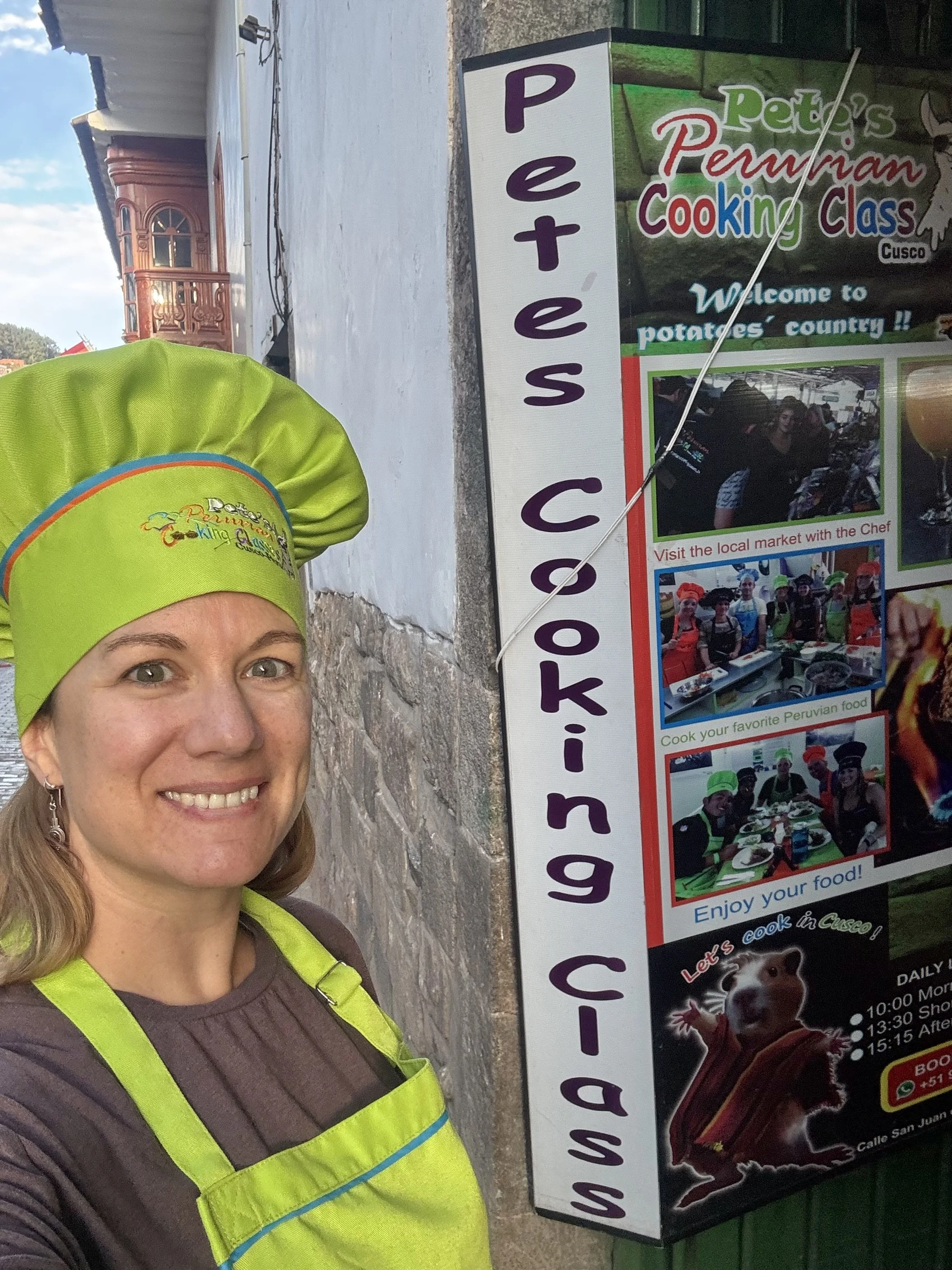Peruvian Cooking Class
This was my first cooking class in Cusco.
My instructor was Abigail, assisted by Johan and Roxana. We began with a pisco sour, followed by ceviche and lomo saltado. Since I don’t like beef, I asked for a vegetarian version but ended up making it with chicken.
The only other person in my group was a woman from Panama, so we got to do the class in Spanish. Abigail usually takes people first to the market, but the Panamanian didn’t feel like walking a lot, so we skipped that and started with some fruit and a pisco sour.
Tasting Peruvian Fruits
Abigail had five fruits for us to try: granadilla, tumbo, pepino dulce, aguaymanto and tuna.
Granadilla and tumbo are both kinds of passion fruit. Pepino dulce and aguaymanto are related to tomatoes, but both very sweet. Tuna is a cactus fruit not a fish. After six years in Cusco, I know them all well but they’re new for most tourists visiting Cusco. The woman from Panama didn’t recognize any of them.
For the pisco sour, we squeezed limes and put the juice with ice, pisco and an egg white in a shaker and shook it until the egg white was really foamy. The final touch is three drops of bitters, partly for the flavor and partly for the aroma. If the drink smells at all like egg, the bitters completely mask the smell.
Ceviche is a Peruvian dish, made for thousands of years along Peru’s Pacific coast.
However, preparing modern ceviche has lots of Japanese influence, as well as sweet limes that the Spanish brought from Asia.
For the ceviche, Abigail gave each of us a small filet of tilapia and taught us how to slice it. First, we took off the fat and gave it to Johan to make the broth with. Then we sliced red onion and a red pepper called limo. We mixed the lime juice with the fish, pepper, salt and spices but left the onion on the side. We added just a little milk, to stop the fish from “cooking” in the lime juice and then poured off the juice to serve separately as leche de tigre, tiger’s milk.
Lomo saltado is one of Peru’s most famous fusion dishes, with Andean and European ingredients, cooked in a wok like many Chinese dishes.
For the lomo saltado, we peeled a tomato and chopped it into wide slices, then Abigail showed us how to make a rose with the long strip of tomato peel. We separated another purple onion into sections, then cut inch-wide chunks of onion and set them aside with the tomato. Abigail set two woks on the stovetop, with a generous amount of vegetable oil. The meat went in first, then when it was about cooked we added the vegetables, cooked them a bit, then added soy sauce and vinegar and tipped the wok to the side so it flamed up.
New Skills
I’ve made stir fry before but I’ve never made a rose with tomato peel. This is definitely a skill I will use again!
I think lomo saltado is popular with cooking classes because the cooking part goes quickly and it produces an impressive amount of fire and smoke.
When everything was ready, we went upstairs where the table was set for dinner.
After class, I peeked next door to the chocolate shop where Abigail was leading a cocktails and chocolates class. She first taught them to make a layered cocktail called Machu Picchu, with heavy grenadine syrup on the bottom, orange juice in the middle and mint-flavored pisco on top. The class was a group of seven 20-somethings but it was even too sweet for most of them and only a couple finished it. The second cocktail was a chilcano, another fruity pisco drink but not as sweet and they all finished those while they learned how to temper chocolate. The last part was using the tempered chocolate to make chocolates with an eclectic variety of fillings.
FYI, now called Peruvian Cooking Class on social media, it was previously Pete’s Cooking Class. Pete is actually a Peruvian named Pedro but when he created the cooking school years ago Pete seemed like a more marketable name.

